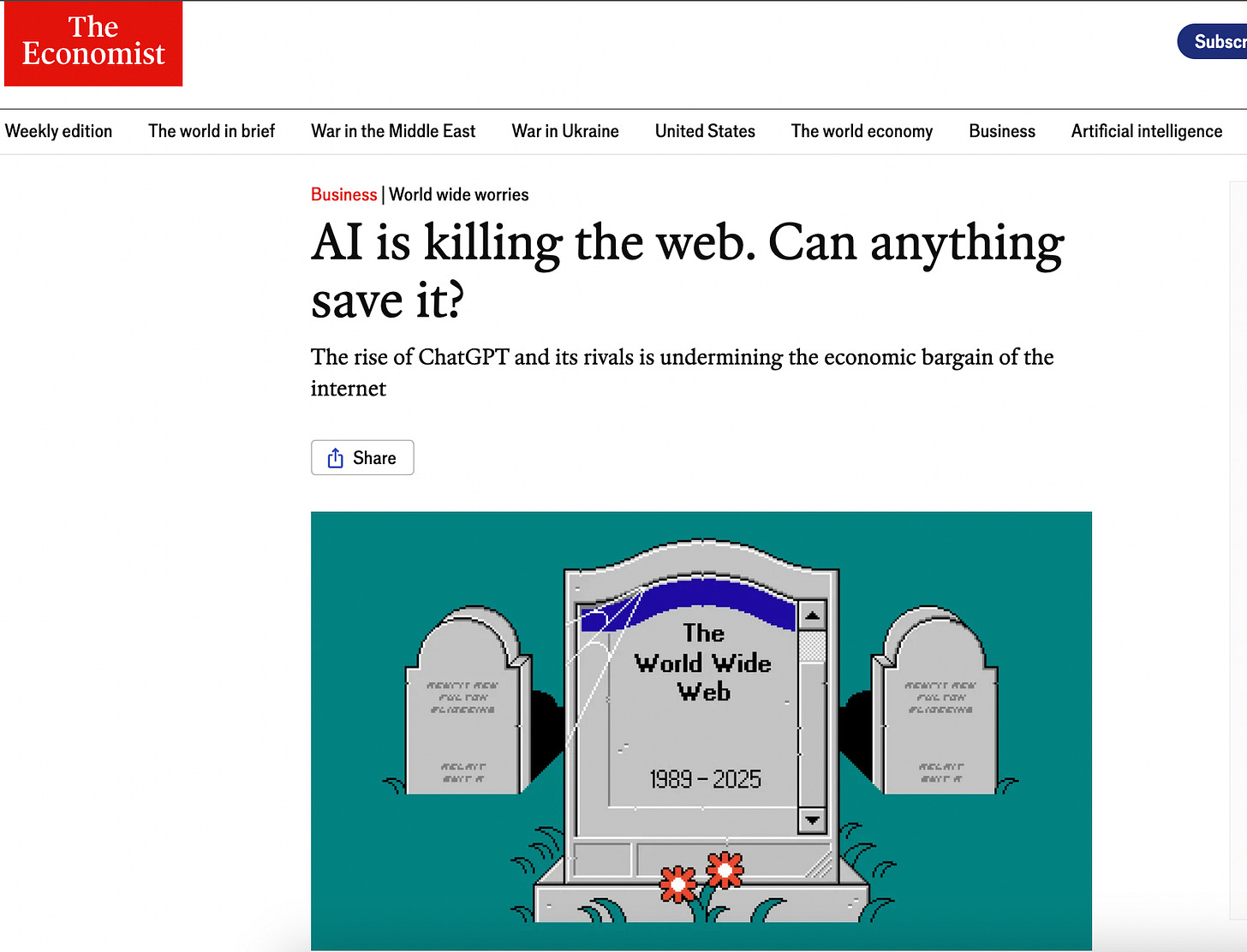Why "everyone needs to use AI" isn't a strategy (and what is)
What I learned about tech decisions by building a product for media operators
Back in March, I spoke at the IAB (Internet Advertising Bureau) Leadership Summit.
It was the first time I’d been in a room full of media and advertising people since I left my agency five years ago. What struck me wasn’t the presentations or the panels, it was the conversations afterwards. Everyone was talking about AI. How to get it into products. How to build features audiences will pay for. And how to get the teams using it.
Important questions.
But as we dug a bit deeper, it was clear that not much is actually happening – internally at least. Even at the biggest household names – the tech companies leading the conversation on AI - adoption inside their own teams is still only happening around the fringes. When it happens at all.
In a way, this makes sense. Their priority has been - rightfully - their product. Commercial priorities. Getting AI to market.
But here’s the thing - building AI products doesn’t mean your teams are using AI to do their jobs. And if people don’t understand why they should use it or what it actually helps with, they won’t bother.
Unfortunately, most businesses skip straight past those questions to “which tools should we buy?”
Back to the world I used to live in
It reminded me of running my last business for a decade. Endless decisions about technology. Which platforms? Which vendors? Which integrations?
And inevitably, I experienced the same hype and overcomplexity that you no doubt suffer from.
If anything, these choices have gotten harder since then. Even more options. More pressure to “do AI.”
I’ve spent months thinking about this from an AI adoption perspective but, honestly, this problem exists everywhere.
Take media. Publishers are facing their own version of this challenge, but with even more urgency.
They’re watching traffic numbers climb while revenue stays flat or declines. Why? Because much of that ‘audience’ isn’t human anymore. It’s bots scraping content to train AI models. The metrics they’ve relied on for decades - page views, impressions, time on site - don’t mean what they used to.
So they need to redesign their monetisation models. Rethink their technology stacks. Make quick calls about billing platforms, identity systems, paywall technology, analytics - and now, bot management.
But the technology vendor landscape is typically chaotic. Everyone claims their platform is the future and they have the AI features everyone needs. Making it very difficult to separate truth from bullsh*t.
What I learned building Monetization Works
I’ve spent the last few months building something to help with exactly this problem. And here’s what surprised me.
When I started talking to media operators about their monetisation stacks, I expected them to want comprehensive vendor comparisons. More research. Deeper analysis.
That’s not what they wanted at all.
They wanted someone to cut through everything and say:
“For your situation, these three vendors matter. Here’s why. Here are the trade-offs. Now make the call.”
Nobody wants another 47-page comparison spreadsheet. They want someone who understands the landscape well enough to say “this matters, that doesn’t” for their particular context.
And that’s true whether you’re choosing monetisation tech or AI tools for your team.
The bottleneck isn’t information - it’s getting clear on what actually matters so you can decide and move on.
Telling your team “everyone needs to use AI” isn’t a strategy. They need to know why they’re using it, what tasks it actually helps with, and how it fits into their work. Without that, you get what I saw at IAB - companies building AI products while their own teams barely use AI at all.
Be the person to bring clarity - that’s what actually moves things forward.





